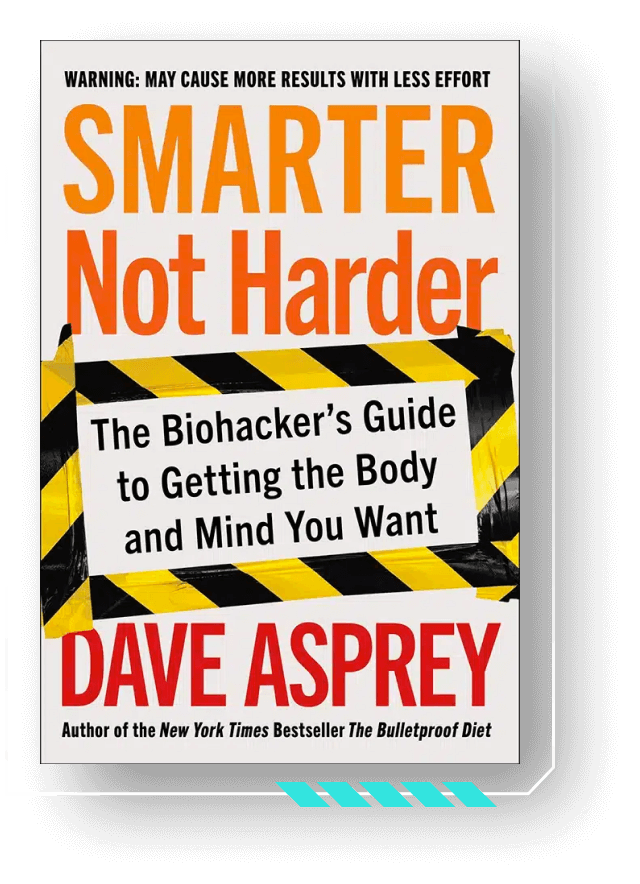
Ready to sit in the driver’s seat once and for all and master your response to anxiety and stress? The Emotional Freedom Technique (EFT), also known as tapping, uses acupressure points to help you release energy blockages to treat emotional and psychological issues. Mind-body medicine pioneer Dawson Church, PhD, author of a new book titled “Mind to Matter” recently sat down with Dave Asprey for a Bulletproof Radio podcast (iTunes) interview to talk about tapping and the field of energy psychology.
What is EFT Tapping?
In simplest terms, EFT uses seven acupuncture points, tapped in a specific sequence, while you recall a negative experience. For instance, you remember something that’s bothered you: a car crash, dog bite, terrible experience in school, being punished by a parent or by a bully. It can be any moment that still bothers you. As you think about that event, you start to get uncomfortable. While you may experience this as a distressing emotion, there is a biological link. What’s happening is that your serotonin and dopamine levels are dysregulating in your brain; and your stress hormones, cortisol and adrenaline, are rising. While it doesn’t feel good to think about the particular event, the tapping technique frames the experience in the context of self-acceptance. The goal is to allow you to inhabit the space of all the grief and loss you’ve never processed emotionally in your life so that you can let it go for good.
How does EFT work?
Bad memories trigger your brain’s limbic system. When you pair a traumatic cue with a soothing cue like tapping, that tells your limbic system that the memory is not a threat in the here and now. Once you break the link between the memory and a fight-or-flight response, even just once, that association remains broken. In other words, the traumatic event will no longer trigger a stress reaction.
Tapping produces electricity in your body called piezoelectricity that functions much like a gas grill. When you turn on the grill, it clicks and clicks until it ignites. The electrical pressure is what eventually produces a spark. When you tap, tap, tap, tap, tap on specific body points, a wave is sent through your connective tissue to the part of your body that’s disturbed or experiencing any kind of energy blockage. The energetic wave breaks up the blockage and you feel better instantly.
Related: How to Move Past the Fears That Hold You Back
Why the tapping technique helps heal trauma and anxiety
The tapping technique works for most kinds of stress-related issues. That includes physiological problems like pain, fibromyalgia, and psoriasis with a definitive stress component. Evidence for tapping is both robust and promising. Among the myriad afflictions tapping helps with: anxiety[ref url=”https://www.ncbi.nlm.nih.gov/pubmed/26894319″], depression[ref url=”http://www.explorejournal.com/article/S1550-8307(16)30106-9/fulltext”], addiction (food cravings)[ref url=”https://onlinelibrary.wiley.com/journal/17580854″], pain[ref url=”http://www.apa.org/pubs/journals/arc/”], PTSD[ref url=”https://www.ncbi.nlm.nih.gov/pmc/articles/PMC5499602/”], and phobias[ref url=”http://journals.sfu.ca/seemj/index.php/seemj/article/view/367″]. It’s even shown promise for mastering your athletic performance[ref url=”https://benthamopen.com/contents/pdf/TOSSJ/TOSSJ-2-94.pdf”].
EFT has been used in the past to treat PTSD in veterans from Vietnam, World War II, and the Korean War. According to Dawson, the veterans’ PTSD symptoms fell significantly after using the tapping technique. They no longer experienced flashbacks, nightmares, or hyper-reactivity to ordinary events.
Try this EFT tapping exercise led by Dawson Church
Think about a disturbing event that occurred in the last couple of weeks, and give it a one-word name. Score it numerically from zero (no distress) to 10 (maximum distress). In three words, if this event were a movie, what would its title be?
Now tap on the side of your hand — between your wrist and the joint that anchors your little finger — and repeat the following while remembering the event:
- “Even though I remember XYZ movie…”
- “I completely accept myself.”
- “That was a long time ago.”
- “I’m okay now.”
- “I am safe now.”
- “And that XYZ movie happened.”
Now stay focused on the movie and, with two fingers, lightly tap right where your eyebrow meets the bridge of your nose. Repeat after me: “XYZ movie.”
Vividly remembering XYZ movie, tap the side of your eye, saying out loud, “XYZ movie.”
- Tap under the pupil of your eye, “XYZ movie.”
- Tap under your nose, “XYZ movie.”
- Tap under your lower lip, “XYZ movie.”
- Tap where your collarbone meets your breastbone, “XYZ movie.”
- Tap about four inches below your armpit (either armpit), “XYZ movie.”
Now, score the event again, on a scale of 0 to 10. What was your first number? What’s your number now, thinking about that old movie? Now say out loud, “I’m still an X (number).” i.e: “I’m still a 4.”
- Continue by saying “… on XYZ movie …”
- “… and I might never get below a four.”
- “I might go back to my original number.”
- “I might go to 10.”
- “I might go to a zero”
- “… or less than zero.”
- “It might go up, it might go down.”
- “Either way, I accept myself.”
- “I might get worse.”
- “I might get better.”
- “Either way, I’m okay.”
- “I’m acceptable.”
- “Either way, I’m acceptable.”
- “I might heal.”
- “I might not heal.”
- “I might get better.”
- “I might get worse.”
- “And I will love myself …”
- “… regardless of whether I get better or worse.”
This last step is crucial, says Dawson, because so often we delay loving ourselves until after we’ve made the extra $10,000, or asked for the raise, or found the girlfriend, or moved to the perfect place to live, or got the perfect job. We’re always saying, “When I lose 25 pounds, then I’ll be acceptable. Then, my life will be fine.” It’s like the dangling carrot always out of your grasp.
EFT says, “You know, my life is imperfect. Things have happened that didn’t work out well for me, and I love and accept myself nonetheless.” Just love yourself, accept yourself the way you are, and tap while you say that. This breaks all the psychological tension in your mind between you having to be different and better before you’re acceptable and lovable.
- Tap the side of your eye again, saying, “XYZ movie.”
- Now tap your pupil again, “XYZ movie.”
- Tap under your nose, “XYZ movie.”
- Tap under your lower lip, “XYZ movie.”
- Tap where your collarbone meets your breastbone, “XYZ movie.”
- Tap under your arm, “XYZ movie.”
- Tap the side of your head again, “XYZ movie.”
Now vividly remember that little movie. Take a deep breath. Stop tapping, and give the event a new score when you remember it again.











